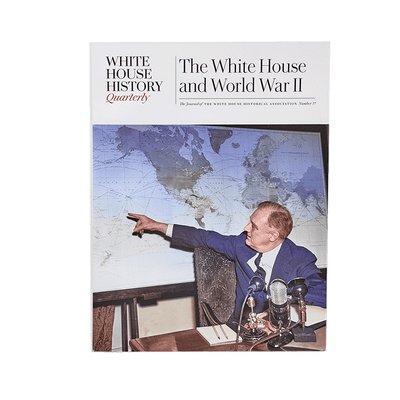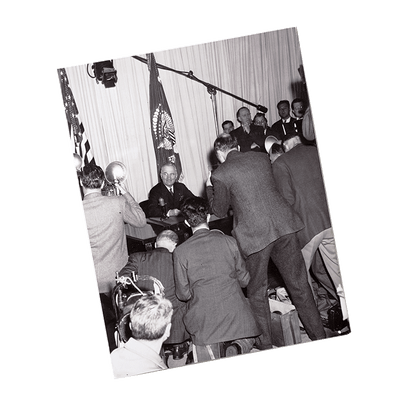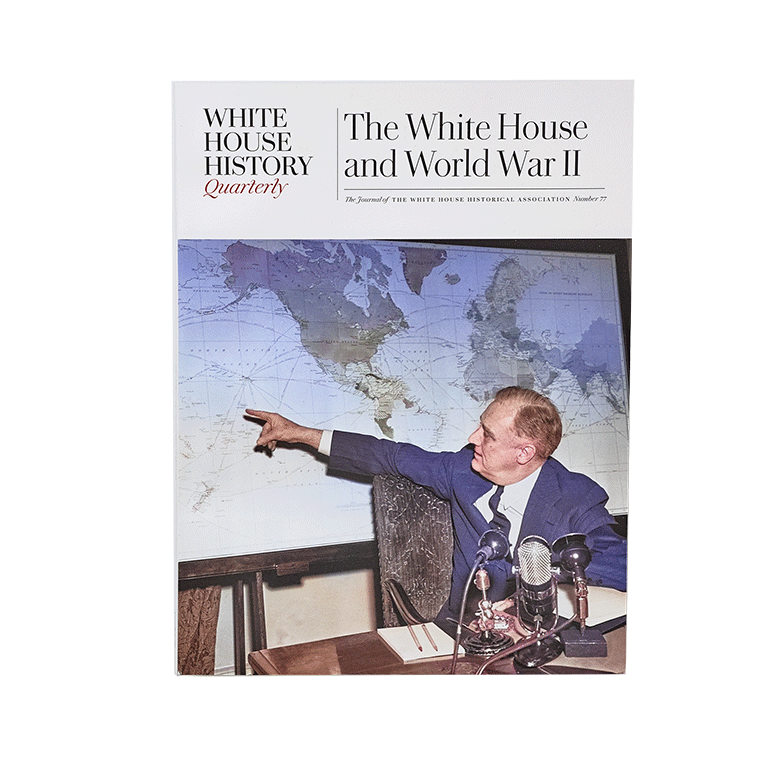


Additional Information
With this issue, as the eightieth anniversary of V-E Day approaches on May 8, 2025, and V-J Day on August 14, 2025, the Quarterly turns to the topic of the White House during World War II.
Our articles take us to the Oval Office for a glimpse of the two presidents who served during the war and one who miraculously survived to serve later, inside the White House to the Map Room, outside to the Victory Garden, across the street to the Stage Door Canteen, and part way around the world to Casablanca. We look at the White House visits of diplomats, a holocaust survivor, and a beloved war correspondent, and end with a trip to Pearl Harbor.
It is a survival story that opens the issue. Author Barbara A. Perry recounts how a famous SOS carved into the husk of a coconut in the Pacific Theater ultimately gave America its thirty-fifth president, John F. Kennedy.
Mary Joe Binker tells the story of a wartime invitation to tea at the White House, when Ernie Pyle, one of America’s favorite war correspondents, met his biggest fan, fellow columnist, First Lady Eleanor Roosevelt. Joel Kemelhor reminds us, however, that not all White House visits were quite so friendly, as he recalls the diplomats who made their way to the Oval Office in the era of the war.
Jonathan Pliska explains how ten-year old Diana Hopkins came to join Americans across the nation in creating a Victory Garden to aide in the war effort. But the 20 square foot parcel where she tended radishes, carrots, beets, cabbage, and more was the only one planted on the grounds of the White House itself.
Jessie Kratz focuses on the signatures of President Franklin D. Roosevelt and British Prime Minister Winston Churchill, now preserved on a document in the National Archives, to reveal the story of secret strategy meeting in Casablanca, Morocco. Alan Capps explains that it was Churchill’s London War Rooms that inspired Roosevelt’s creation of the White House Map Room, where maps remain stored and displayed today. Long gone, however is the Belasco Theater on Lafayette Square, which housed the Stage Door Canteen during the war. Cindy Gueli reminds us of the shows, music, dancing, and refreshments that welcomed service members for brief interludes of rest and relaxation.
David Marthy presents President Franklin Roosevelt’s death from the unexpected perspective of the young West Point Cadets who heard the news as they prepared to go to war, and who would participate in his funeral at Spring Hill.
Randy Sowell picks up the narrative with the dramatic opening months of Harry Truman’s presidency, during which he announced the end of the war.
Christina Ewald explains how the end of the war was the beginning of a very different life for Martin Greenfield. Liberated from Buchenwald by troops under the command of General Dwight D. Eisenhower, Greenfield went on to tailor fine clothing for six presidents, including his hero, President Eisenhower.
Lauren McGwin concludes the issue with a visit to the Battleship Missouri Memorial at Pearl Harbor, Hawaii, where she discovers this issue’s presidential site, the Truman Line.




